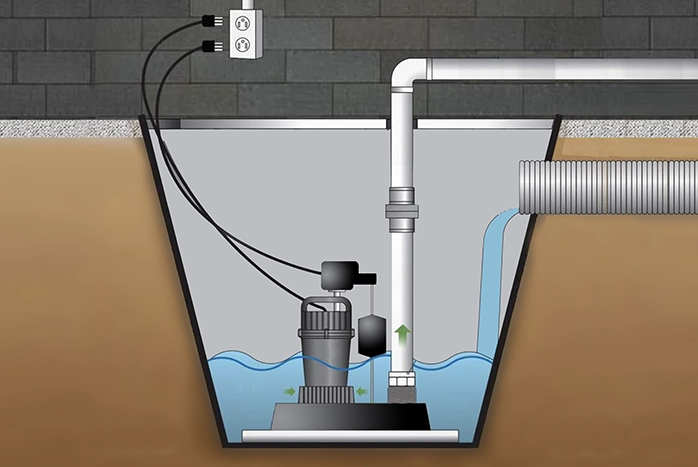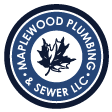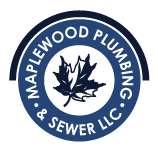
Protecting St. Louis Homes from Water Damage Since 1985
According to riskfactor.com, nearly 25,000 properties (or 8% of homes) in St. Louis County have a greater than 26% chance of being severely impacted by flooding in the next 30 years. Overall, our area has a moderate risk of flooding, meaning flooding could impact day-to-day life, cutting off access to utilities, emergency services, and transportation.
That risk goes up for commercial buildings in St. Louis County, with more than 2,500 (out of about 13,000) commercial properties. And 61 of our infrastructure facilities are at major risk of flooding.
One of the easiest, most cost-effective ways to lower the risk of your own St. Louis home flooding is to install a sump pump in your basement or crawl space.
According to insurance industry research, 98% of basements in the United States will experience some type of water damage during their lifetime. Even a small amount of water can cause thousands of dollars in damage, mold and mildew growth and health and breathing hazards.
You don’t have to live in a flood zone to warrant having a sump pump. Especially in St. Louis’ older homes, basements were built below ground, and sometimes they are below the water table. That means the water can seep inside the foundation, through cracks in the walls or floor, and accumulate, causing damage in your home. Heavy rains aren’t the only reason for a sump pump. Excess water from a clog in your drainpipes can cause water to backup and seep into the basement or crawl space.
Water Damage Defense recommends that every U.S. home have a reliable sump pump and backup sump pump protecting its basement. We recommend them for peace of mind.
How Does a Sump Pump Work?
Sump pumps remove water that accumulates in your basement and collects it into a sump basin. This sends the water away from your home to a storm drain or dry well where it won’t cause problems.
When the water gets to a certain level, the sump pump’s float mechanism, or float switch, is activated (much like a toilet tank’s float mechanism) and turns on the sump pump, pushing water out and away from your home.
Pumps sit in a pit submerged in water, and the float mechanism raises up with the water level. As the water drops, the pump will turn itself off as the float lowers.
Sump pump water discharge runs outside to a dry well or a creek or pond near your home. It may also run into a French drain.
Primary sump pumps run on electricity. Your backup pump should work even when there is a power outage or pump failure. Water-powered sump pumps are the perfect solution for this, as they are more expensive to run than your primary sump pump, but as an emergency pump, will only turn on when necessary. Water-poweredsump pumps will never need new batteries and cost a considerable amount less than what you’ll spend if your basement floods.
Which type of sump pump should I purchase?
There are two types of pumps to choose from: submersible sump pumps and pedestal sump pumps. The one you select will depend on four factors:
- Sump pit size. Larger sump pits can hold submersible sump pumps, but if your pit is shallow or very narrow, you may need to install a pedestal sump pump instead.
- Material. Sump pumps can be made from cast iron, aluminum, or thermoplastic. Cast iron is the strongest of the three but may also rust over time, whereas aluminum and thermoplastic will not.
- Float switch type. The two most common types of float switches are tethered float switches and vertical float switches. Tethered switches are efficient and easy to use, making them the most common. These use a holding ball attached to the basin lid or pump. Vertical switches include a housing with a rod, a float, and a switch. This housing attaches the pump to the discharge pipe. There are three different types of vertical sump pump switches: solid core float (the most reliable), electromagnetic, or bulb float switch.
- Power. Sump pump strength is measured in horsepower (hp). A 1/2 horsepower motor is usually enough for most homes, but if you live in an area that sees a lot of flooding, you can choose a 12 horsepower model.
Submersible Sump Pumps
Submersible sump pumps sit below water level at the bottom of your sump pit. These pumps are quieter than pedestal pumps because the motor operates underwater. Another advantage of these pumps is that the water helps to cool the motor so that it is less likely to overheat or quit on you during extended periods of use (heavy rainstorms). Submersible sump pumps are also capable of pumping out solid waste and debris. If you need to move the water more than a few feet to get it outside and away from your home, choose a submersible pump with more horsepower. Look for the HP rating and the GPH (gallon per hour) rating before you purchase to ensure it has the power you need.
Pedestal Sump Pumps
Pedestal sump pumps are ideal if your sump pump pit is shallow or narrow. These pumps are situated above the water in your pit, so they don’t require as much space, but because they operate above the water line, they are quite a bit noisier. While they can be made from different materials, your best bet for a pedestal pump is one that is made of cast iron. These hold up well to wear and tear. However, if you’re concerned about the noise, or if your sump pit might contain solid debris, it’s best to go with a cast iron submersible sump pump.
How Are Sump Pump Systems Installed?
Installing a sump pump isn’t a weekend DIY project. But if you’re a professional Do-it-yourselfer and have the time and ability, you can purchase a DIY sump pump kit. The mere mortals will leave it to the professionals! Your plumbing team will excavate a sump pit for the liner and pump to be placed inside at the lowest point of your basement. This protects your sump pump from the mud and debris that can accumulate around the sump pit. If the pump cannot be installed at the lowest point, a PVC pipe will be installed that runs through the floor of your basement from the low spot to the location of your sump pump.
In addition to installing a submersible sump pump pit and pump, you may also want to install a perimeter French drain system. This requires jackhammering the perimeter of the basement and installing a layer of clean stone. This edging around your basement is meant to collect water from the basement walls, the edge of the walls and floor, and even from underneath the basement floor and direct it into the sump pump. This perimeter drain will be finished with a new floor so there are no gaps for a clean look.
Your waterproofing professional will install an outlet that connects the perimeter drain to the sump pump and backfill clean gravel around the liner of your sump pump. Your pump will include an airtight lid to keep odors and humidity from rising out of the pit and prevent debris from your basement floor from finding its way inside. It also serves to keep curious animals and children out!
On the outside of your home, an anti-freeze device may also be installed. This line is buried underground by creating a trench for the pipe and installing an outlet flush with the ground for a clean, finished look.
How Long Does a Sump Pump Last?
Your sump pump should last eight to 10 years if it’s installed properly and regularly maintained.
Before having your basement finished, look for signs of water or moisture, such as cracks in the foundation. You will want to have a sump pump installed to correct this problem before you begin your remodeling project so that you don’t end up with a flooded basement.
Competency, skill, and a tradition of excellence make Maplewood Plumbing and Sewer the best choice for your plumbing or remodeling needs. All our plumbers are licensed professionals with extensive industry knowledge.
Maplewood Plumbing and Sewer has been installing sump pumps in St. Louis basements for more than 40 years. Contact us today at 314-645-6350 or here for more information or to request a bid.
We offer a one-year warranty on all parts and labor excluding washers.


